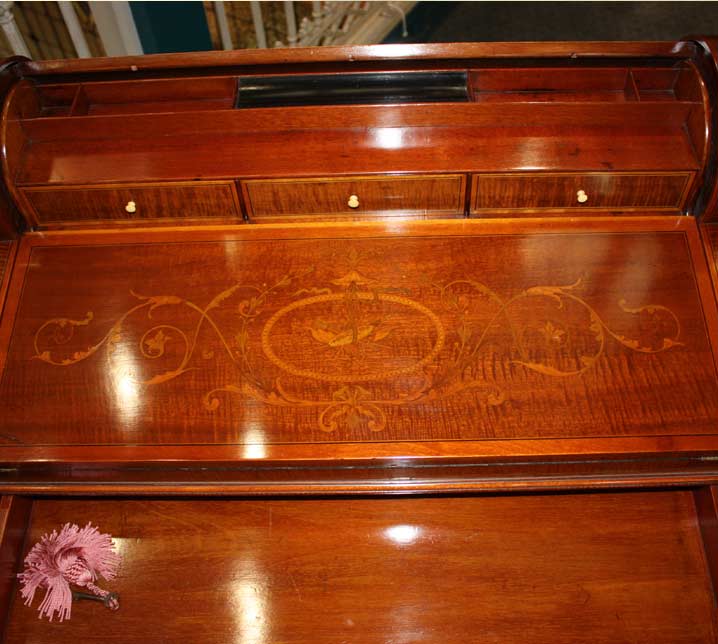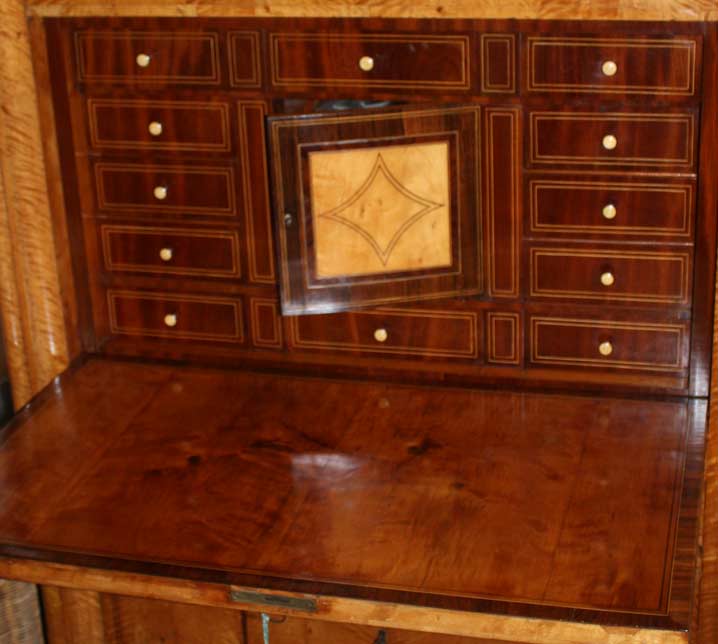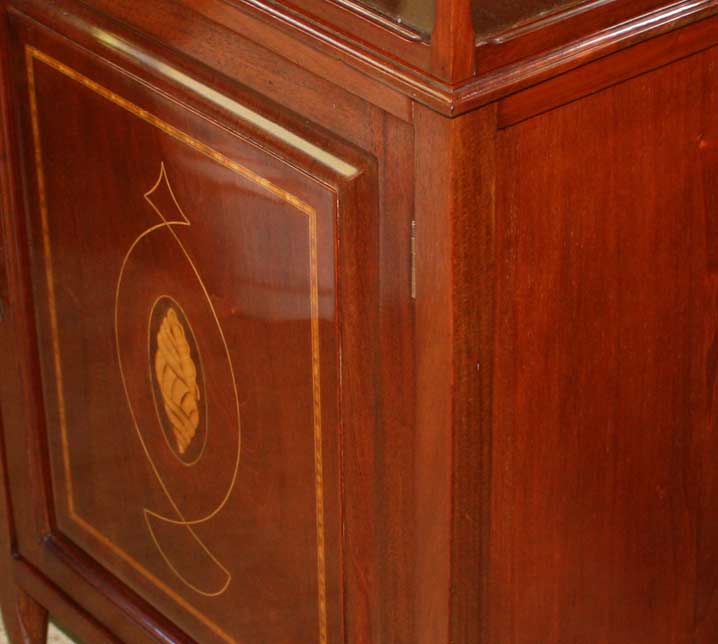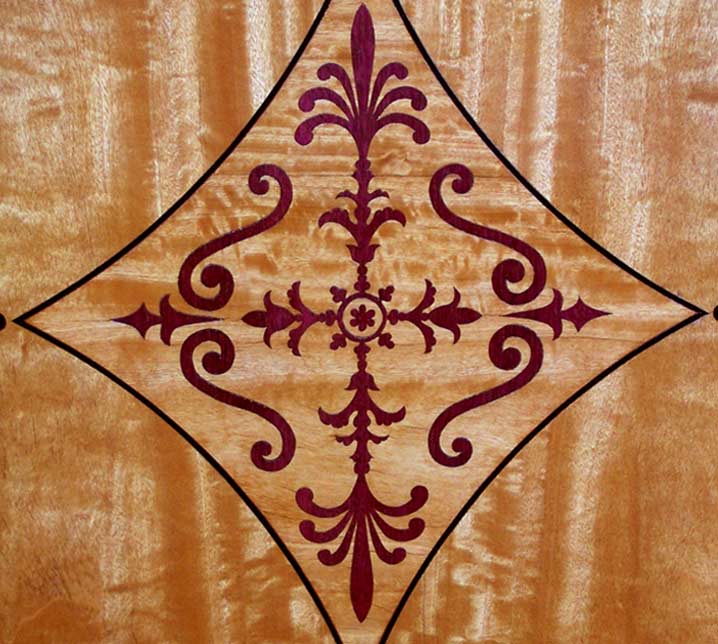
Antique Furniture Veneering
Veneering is an indispensable branch of woodwork. The scarcity of finely figured woods makes economy in their use essential. In fact many woods are unobtainable except in veneer form. Therefore everyone who makes furniture should know how to veneer. The subject is full of pitfalls for the inexperienced. A piece of work may appear sound when first completed, but the ultimate test of veneering is that of time, and it is only work which can pass this test, that can be accounted successful.

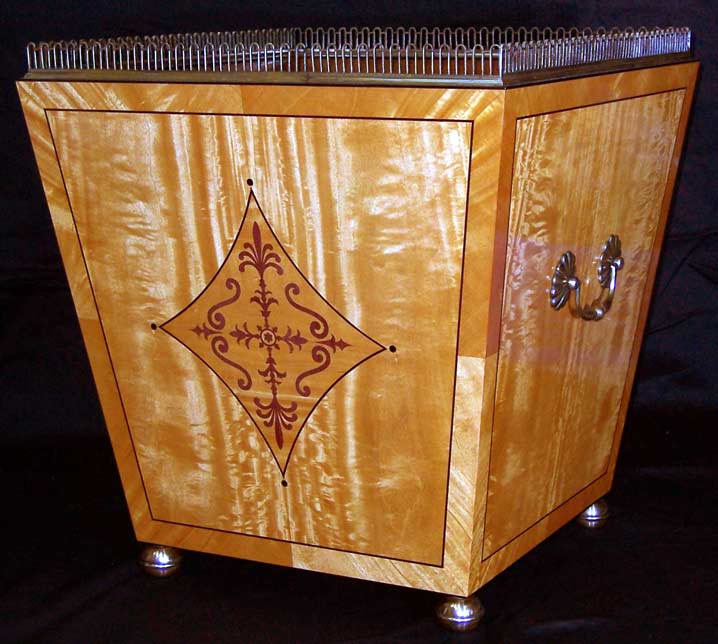
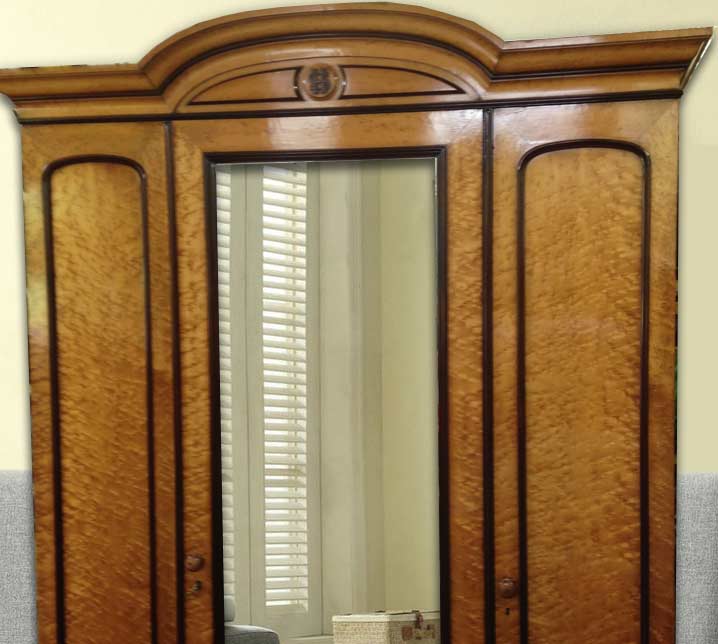
In the words of Charles Hayward, " There is an old illusion that the term veneering is synonymous with woodwork which is cheap and shoddy; that it represents an attempt to cover up cheap materials and poor workmanship; and that it is altogether inferior to solid wood. Nothing could be further from the truth. Properly completed, a piece of veneered woodwork is as reliable as a solid job. It is made of the best timber , calls for the highest quality workmanship, and is anything but a cheap process to carry out."
The chief advantage of veneering is that it enables effects to be obtained which would be impossible or at any rate very unreliable if carried out in solid wood.
There are certain woods which, although beautiful in figure, are liable to twist and split if used in the solid because of their wild grain. It is obvious then that veneering provides the only means by which such woods can be used, since by fixing them in thin sheets to a groundwork made of plain but reliable timber, the necessary strength is provided.
By using veneer the job can be built up in a convenient way which will provide maximum strength, and it will show a fine grain in every part, and be free from visible joints. Please refer to Marquetry and inlaid work for further elaboration on the techniques involved in the more decorative aspects of veneering.
